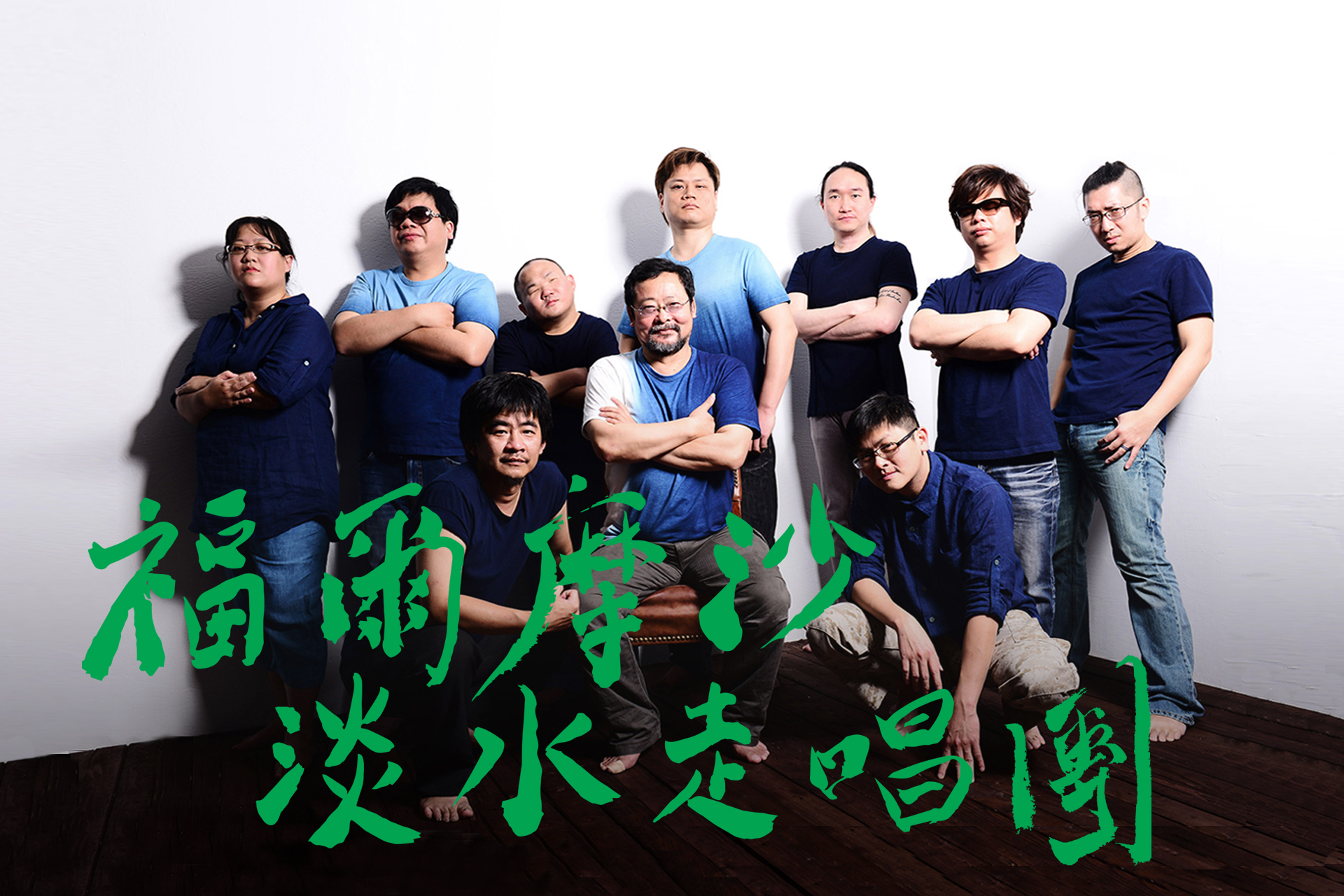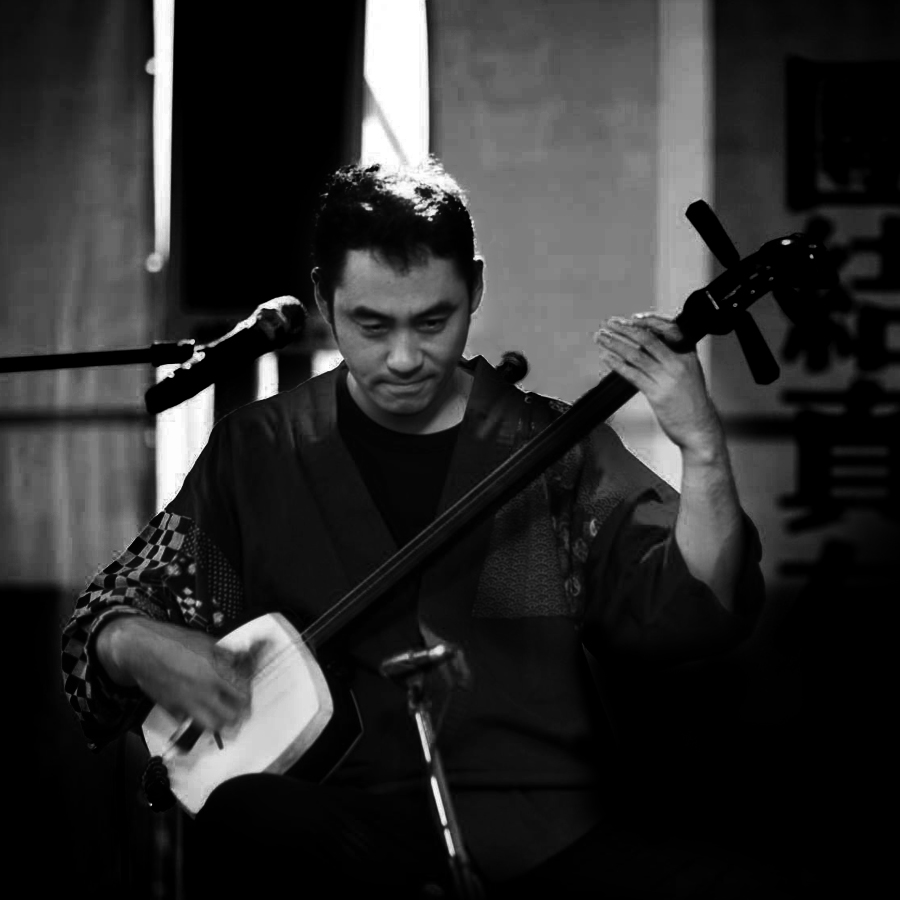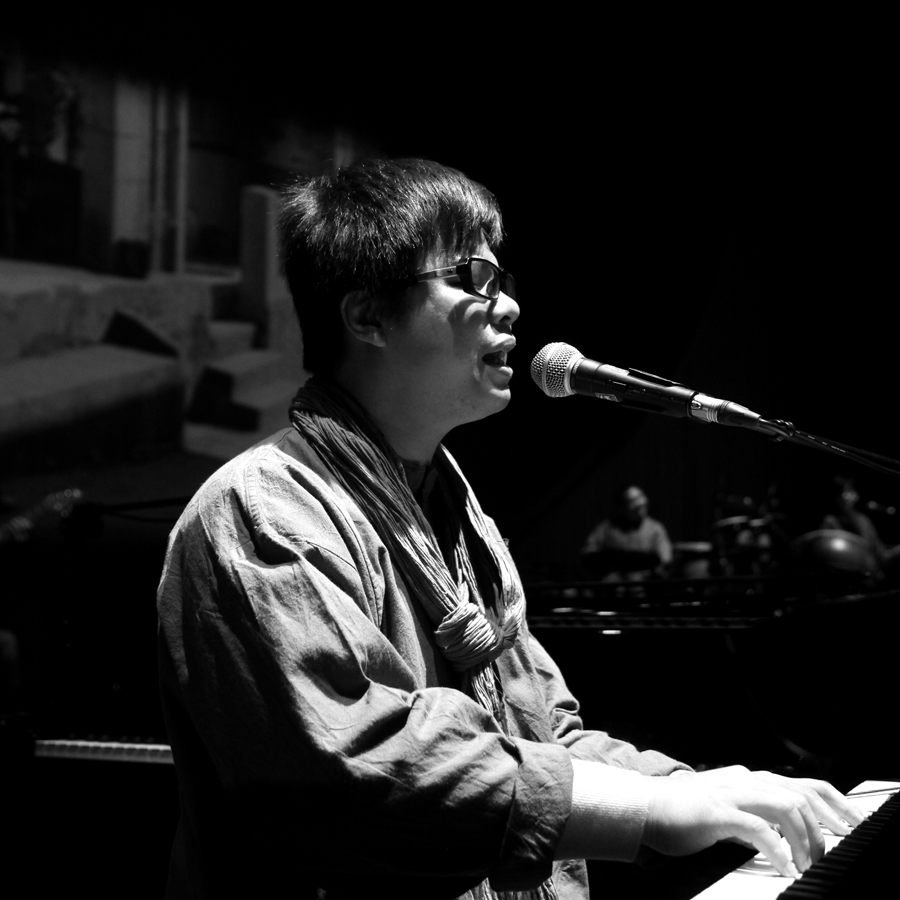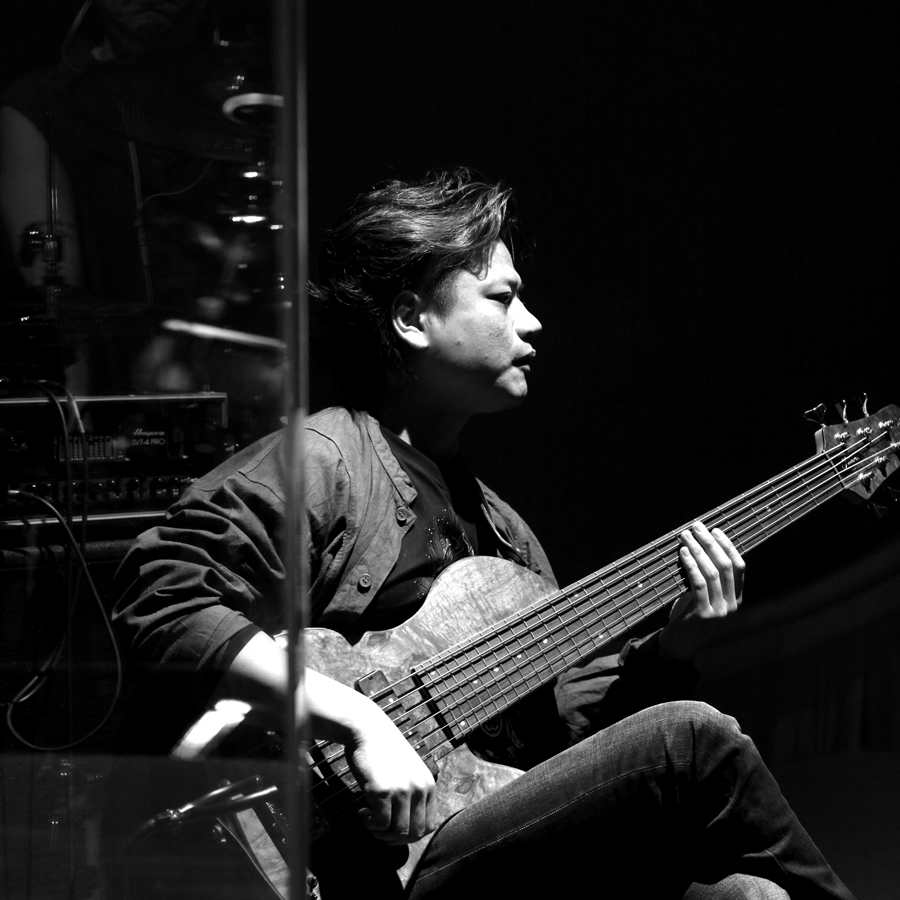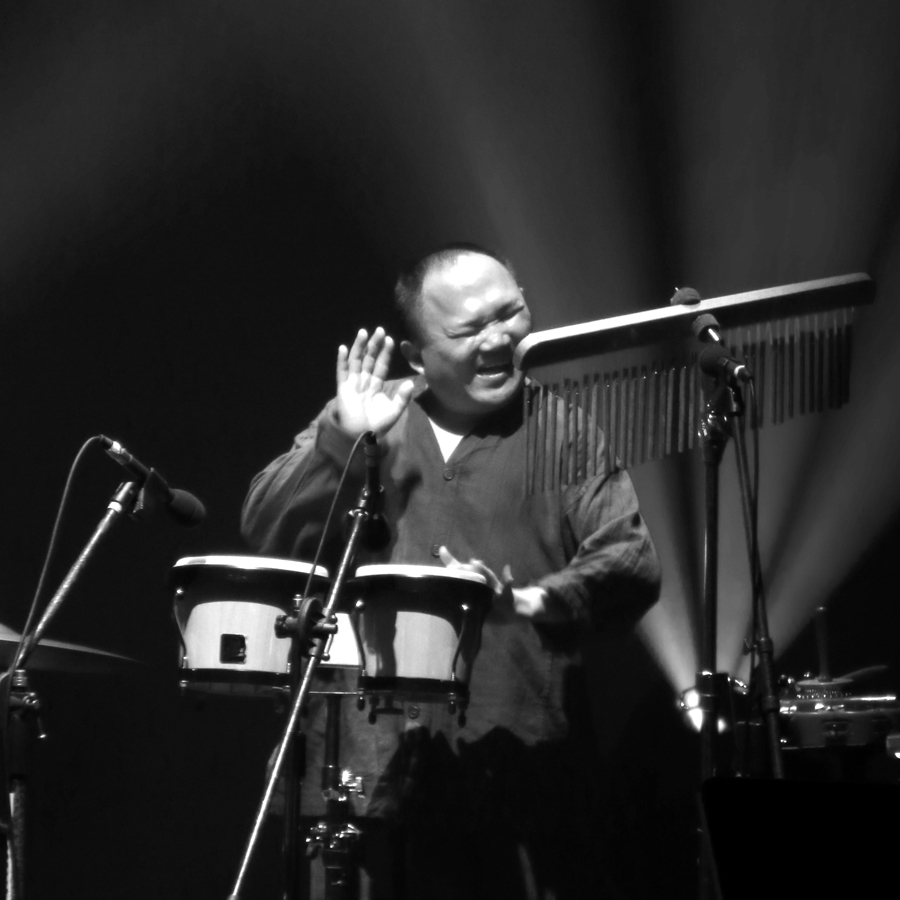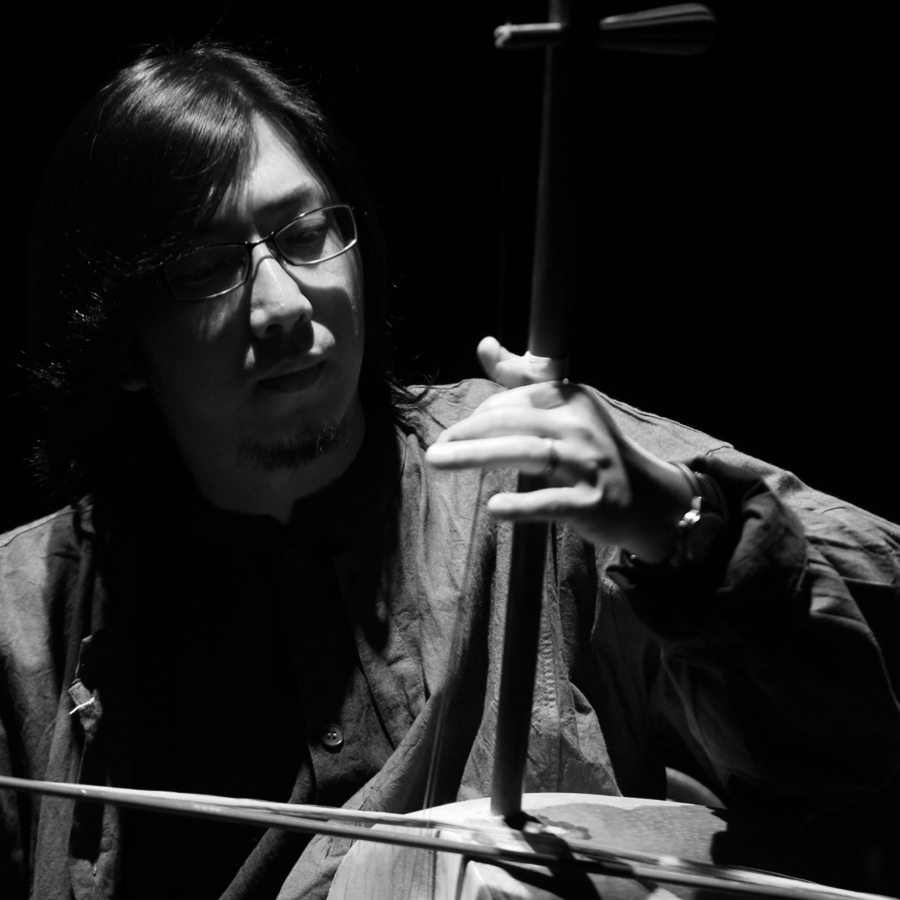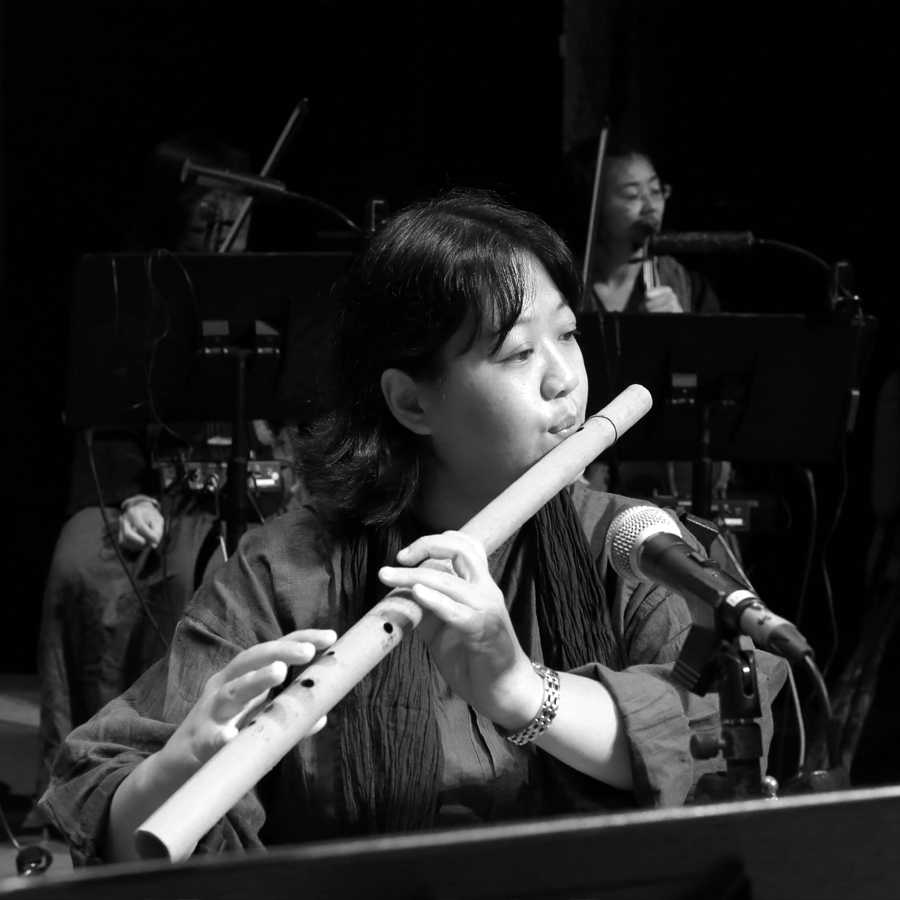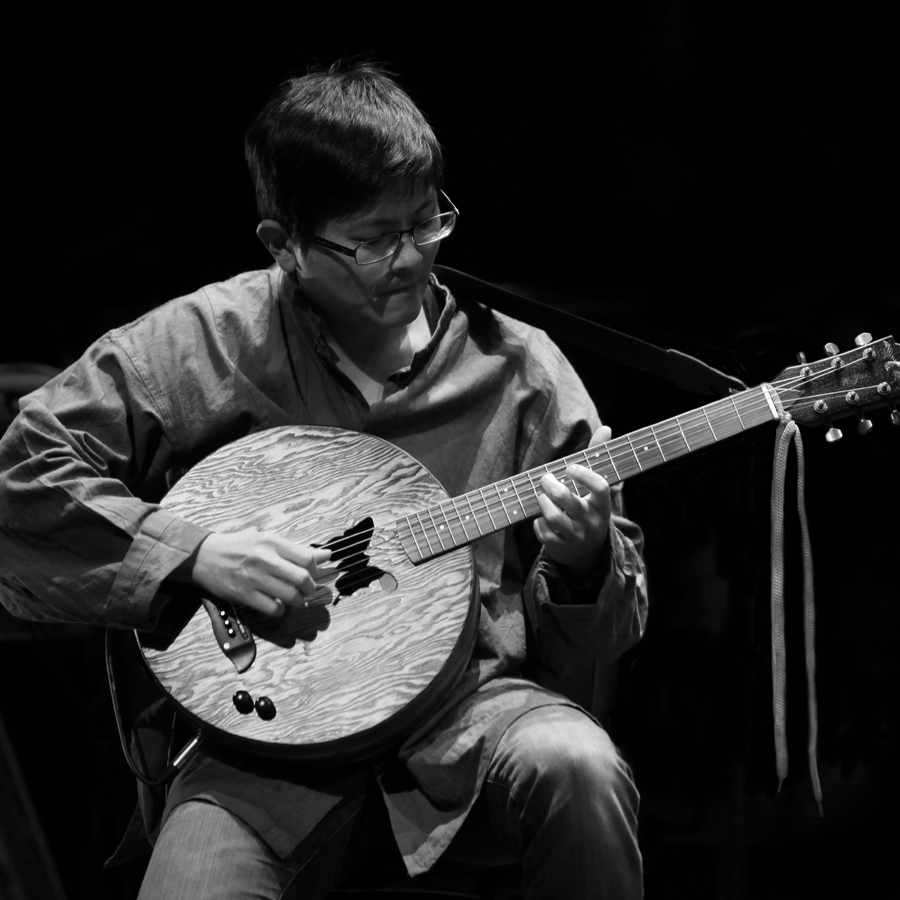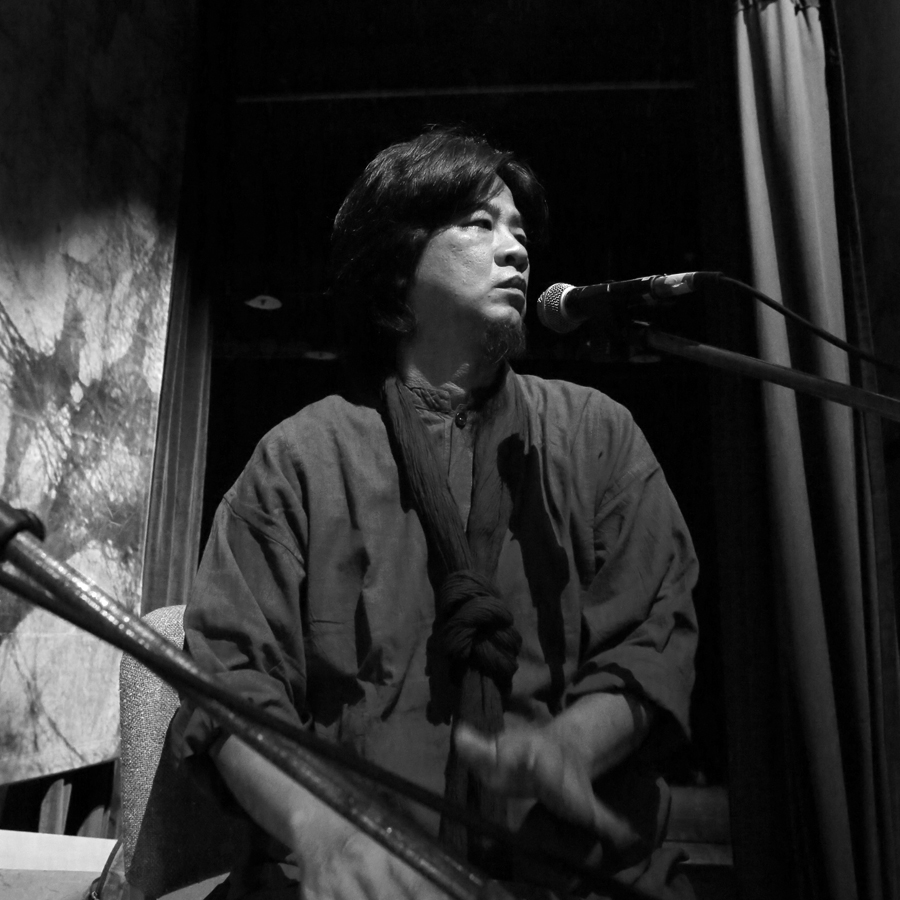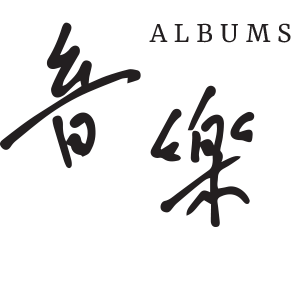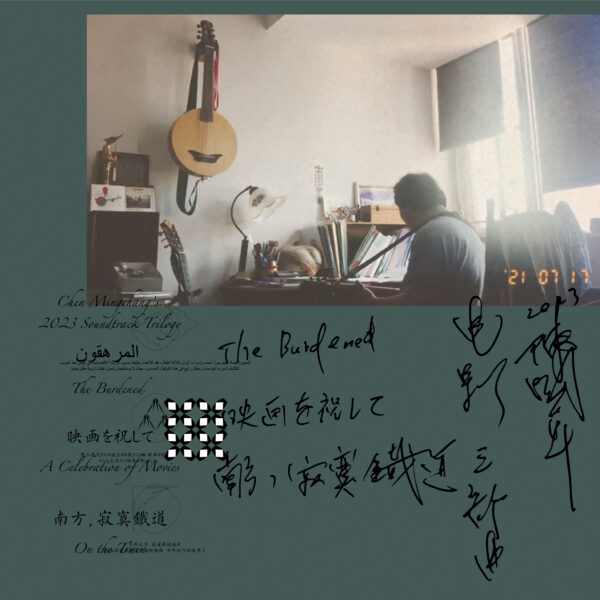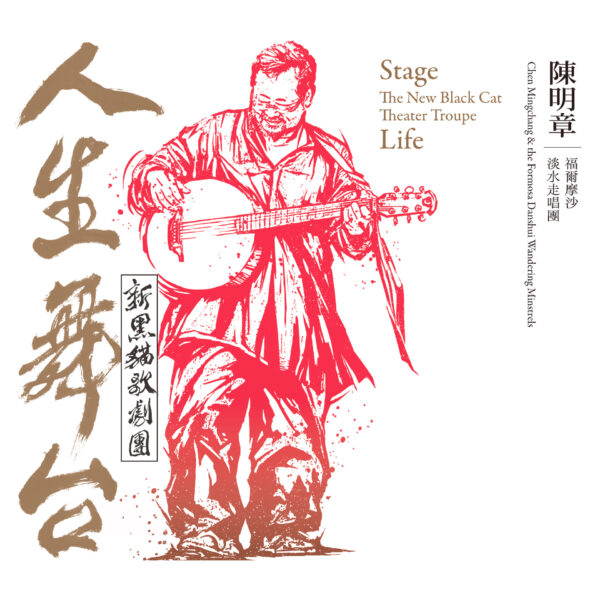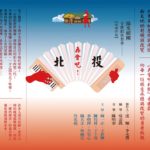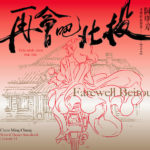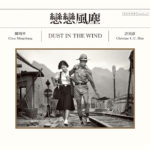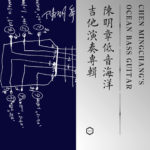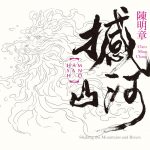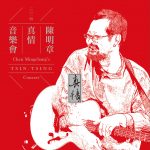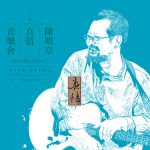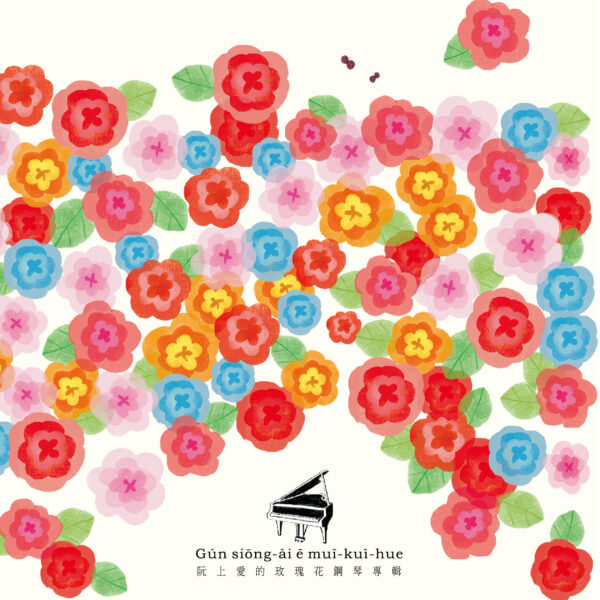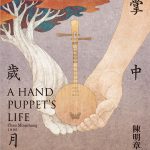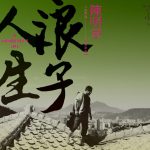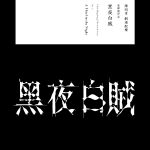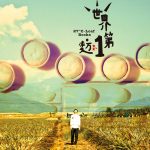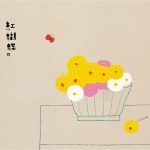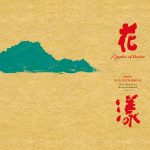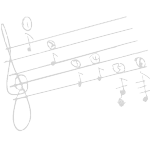淡水走唱團成立於1996年秋天
「淡水走唱團」的名稱緣於台灣北部有淡水河,南部有下淡水河(即今名高屏溪),東部也有淡水溪。台灣的河川之美孕育無窮的人文生活及民眾生機,台灣的山脈森林,及環抱的太平洋,也正是宇宙賦予此地人們生存及生活的美感泉源,而這也是淡水走唱團創作靈感的泉源。
「淡水走唱團」為一群喜好音樂的朋友所組成,初期為陳明章、金門王、李炳輝、郝志亮、沈懷一、小謝、阿昌、鍾國艷、陳茂富、Steve、謝武吉經多年組合、演變,這群來自台灣各地的文化結晶的熱血音樂人,成就其豐富的音樂性和生命力。
1999年陸續加入了第三代團員王俊傑、李斯勇、張林峰、郭謙成,延續走唱團溫暖的樂風,將快樂傳遞到每個角落。淡水走唱團與所有人一樣,在台灣這塊土地上,共同感受生活周遭的點滴。因此,隨著他們所創作的音樂與歌聲,和聽眾一起感動,一起共鳴。
2007年演出形式增加了陳明章調弦吉他多樣的演出內容,東方古典的樂團演出編制。陳明章把從小在廟口聽見的各種戲曲元素,親切且巧妙的融入自己的歌曲中;日後,他將東方的五聲音階、南管、北管與歌仔戲的曲牌轉換成為全新的語言,把布農族的八部合音感動的聲響變成了獨特的吉他調弦法,海浪一波波拍打海岸的聲響,讓他創造了獨一無二的海洋吉他調弦法,手上的那把吉他已經擁有了全新的生命,創造屬於陳明章的民謠樂。本部來自各方音樂好手;二胡、大廣弦、還是殼子絃都難不倒他的蕭詩偉,兼具西方與東方精神的鼓手鍾成達,以及笛子手林玲安、吉他手黃培育。在這些東方色彩樂器與樂種下,陳明章把這些音樂創作推向國際,使台灣的音樂現代化但又不失傳統。
2009年淡水走唱團正式更名為福爾摩沙淡水走唱團。
2015加入東京團員 三味線演奏家 車谷建太。
この小さな島に
広がる耕作の跡
汗水した笑顔であろうと
裸足の痛みであろうと
この地には
我々が歩んだ春夏秋冬がある
1996年秋、淡水走唱団誕生。
名前の由来は、台湾北部の「淡水河」、南部の「下淡水渓(現在の「高屏渓」)」、東部の「淡水渓」。人々の豊かな文化と生活、活気を育む台湾の河川の美しさ、山々と森林、そして太平洋は、宇宙が人類に与えた、生きる美しさの泉であり、淡水走唱団の創作におけるインスピレーションの源でもある。
淡水走唱団は、音楽好きの友が集まり、結成。初期メンバーは、陳明章、金門王、李炳輝、郝志亮、陳懷一、小謝、阿昌、鍾國艷、陳茂富、Steve、謝武吉。年月を経て、メンバーやスタイルも変化したが、この集団は、台湾各地から集まった文化の結晶とも言える熱い音楽人たちの、豊かな音楽性と生命力が成就したものである。
1999年、三代目のメンバー、王俊傑、李斯勇、張林峰、郭謙成を迎え、温かい楽風をもって、幸せを各地に届ける。淡水走唱団、そして、すべての人と同様、台湾の地で、共に生きるための点滴のような存在となる。彼らの創る音楽と歌声に寄り添い、聴衆と共に感動し、共鳴するのだ。
2007年、陳明章の調弦ギター、東洋の古典楽団の演出が加わる。 小さい頃から聞いていた廟の様々な戯曲の要素を、丁寧かつ巧みに自分の曲の中に取り入れた。後に彼は、東洋の五音音階、南管、北管と歌仔戲の曲を、全く新しい言葉に転換させた。ブヌン族の八部合唱を彼の独自のギター調弦法に変えた。波が海岸に当たり響く音は、彼独自の海洋ギター調弦法を生み出した。自分のギターに新しい命が宿ったかのごとく、陳明章の民謡楽曲が創られたのである。二胡、大廣弦、殼子絃をいとも簡単に奏でる蕭詩偉、西洋と東洋の精神を兼ね備えた打楽器奏者の鍾成達、笛の林玲安、ギターの黃培育といった秀れた音楽人が集結。色彩豊かな東洋の楽器と共に、陳明章の音楽を世界に発信。伝統を失わない台湾の音楽を現代のものとした。
2009年、「淡水走唱団」を「フォルモサ淡水走唱団」と改名。
Formosa Danshui Wandering Minstrels
This island is covered with the marks of deep plowing
No matter whether it’s a smile under a sweaty brow
Or the soreness of bare feet
This land is replete with all the years that we have lived through
Formosa Danshui Wandering Minstrels
About the Formosa Danshui Wandering Minstrels
The Formosa Danshui Wandering Minstrels were formed in autumn 1996. Their name came from the Danshui (or Tamsui) River in northern Taiwan, the Lower Danshui River (now called the Gaoping River) in southern Taiwan and Danshui Stream in eastern Taiwan. Taiwan’s beautiful rivers are replete with boundless cultural life and are a vital source of the people’s livelihood. They, along with Taiwan’s mountains and forests and the surrounding Pacific Ocean, are sources of the beauty of life and existence that the cosmos has bestowed on people living here. They are also sources of creative inspiration for the Danshui Wandering Minstrels.
The Danshui Wandering Minstrels were formed by a group of friends who all loved music. At the beginning members included Chen Mingchang, Jinmen Wang, Li Binhui, Hao Jhiliang, Shen Huaiyi, Little Sie, A-Chang, Jhong Guoyan, Chen Maofu, Steve, and Sie Wuji. This assemblage of enthusiastic musicians from all over Taiwan developed and evolved through many years. Their prolific works were full of musicality and vitality.
In 1999, a third generation of members, Wang Junjie, Li Si-Yong, Jhang Linfeng, and Guo Ciancheng, joined the band one after another. Their performances are filled with warmth and modern performance styles. Their songs break down the barriers between people, bringing out the solicitude hidden deeply in them, leading them to think about their neighbors and care about the development of their neighborhoods. Their music makes people laugh with joy and brings happiness to every corner. Like everyone who lives here, the Danshui Wandering Minstrels walk on the same land, feeling all the details of what happens in life every day. The Danshui Wandering Minstrels hope to head into the midst of the crowd, to breathe, to be emotionally moved and to resonate together with the audience.
Beginning in 2007, the Danshui Wandering Minstrels added Chen Ming-Chang’s alternate guitar tunings and structural elements of Eastern classical music groups into their performances. Chen Mingchang melded a lot of elements from traditional operas that he saw and heard when he was a child into his songs. Later, he mixed the traditional eastern pentatonic scale, nanguan, beiguan and Taiwanese opera into a brand new style. He transferred the eight-part polyphony of Taiwan’s Bunun aboriginal people into a unique guitar tuning that evoked the sound of the sea lapping against the shore, thereby creating the one and only “ocean guitar” tuning and opening up a new way of using the guitar to write his own unique brand of folk music. The group now includes performers such as Siao Shiwei, who can play almost any kind of stringed instrument, including erhu, daguangxian, kezaixian, and so on; drummer Jhong Chengda, who combines the spirit of East and West in his drums; Lin Linan, who is a professional Chinese flute musician; and Huang Peiyu, who plays the second guitar and bass. With the addition of these Eastern instruments and musical styles, Chen Mingchang plans to bring these musical creations to international audiences, helping Taiwanese music to modernize without losing its traditions.
In 2009, the Danshui Wandering Minstrels formally changed their name to the Formosa Danshui Wandering Minstrels.

